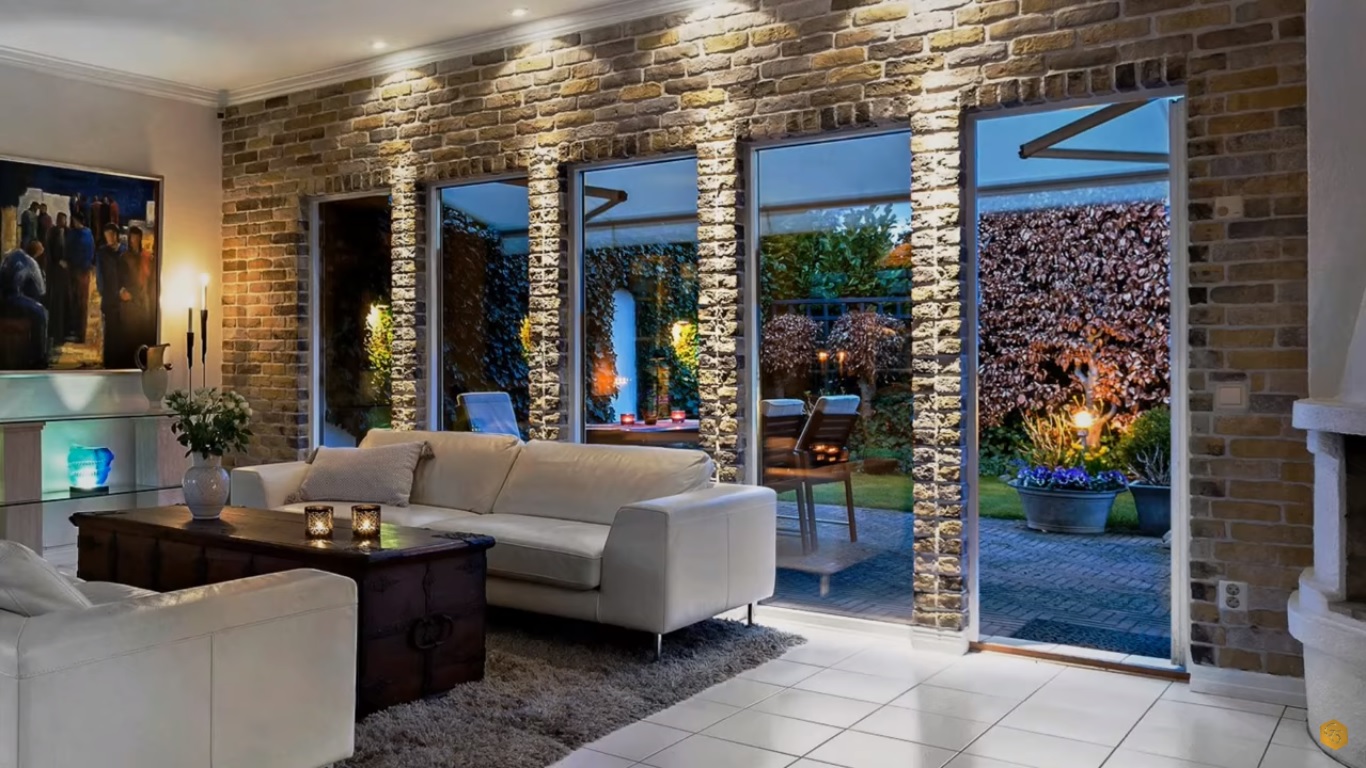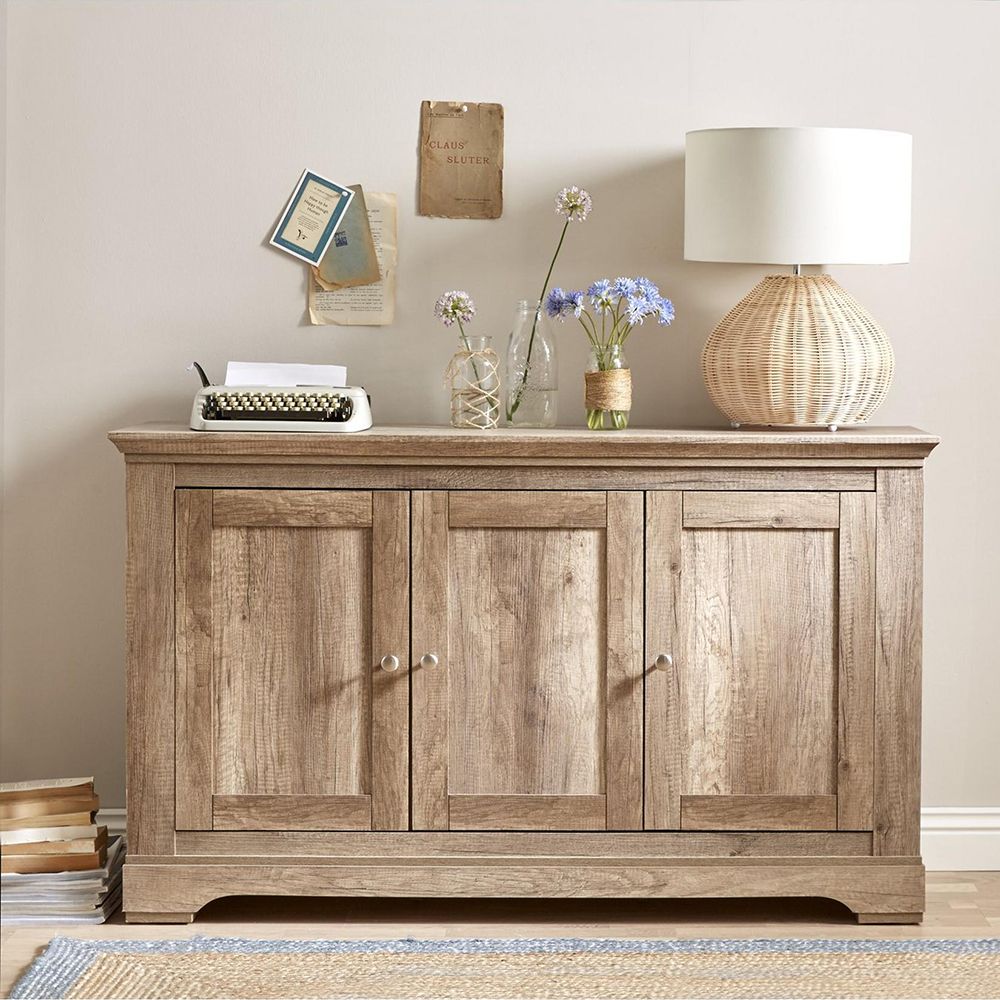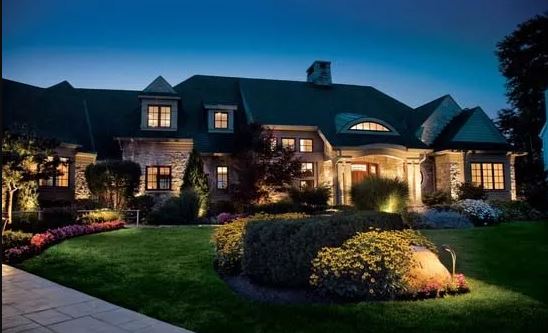Balancing technology and aesthetics in smart home interior design presents a unique challenge: seamlessly integrating sophisticated technology without compromising the beauty and harmony of a home’s aesthetic. This exploration delves into the strategies and considerations necessary to achieve this delicate balance, examining how minimalist design principles, smart home device selection, and careful material choices can contribute to a cohesive and visually appealing living space.
We’ll investigate methods for concealing technology, explore different smart home system integrations, and discuss the importance of user experience in the overall design.
The integration of smart technology shouldn’t detract from a home’s character; rather, it should enhance it. This requires a thoughtful approach, considering not only functionality but also the visual impact of every element. From strategically placed smart speakers to subtly integrated lighting systems, we’ll uncover how technology can be elegantly incorporated into various interior design styles, ranging from modern minimalism to traditional charm, ensuring a harmonious blend of form and function.
Defining the Balance
The inherent tension between seamlessly integrated smart home technology and a visually appealing interior lies at the heart of modern design challenges. Smart home devices, while offering unparalleled convenience and functionality, often come packaged in bulky, visually jarring designs that clash with the aesthetic goals of many homeowners. This conflict arises from the prioritization of technological functionality over aesthetic considerations during the initial design and manufacturing phases of many products.
Successfully navigating this challenge requires a thoughtful approach that prioritizes both functionality and form.The seamless integration of smart home technology is significantly enhanced through the adoption of minimalist design principles. Minimalism, with its emphasis on clean lines, uncluttered spaces, and a focus on essential elements, provides a perfect backdrop for discreetly incorporating technology. By prioritizing simplicity and functionality, minimalist design naturally complements the often-unseen nature of effective smart home systems.
This approach allows technology to support and enhance the overall aesthetic, rather than detract from it.
Minimalist Design and Smart Home Integration
Minimalist design principles offer a strategic approach to integrating smart technology without compromising visual appeal. The core tenets of minimalism—simplicity, functionality, and clean lines—naturally align with the goal of discreetly incorporating smart home devices. For example, a sleek, wall-mounted smart thermostat can seamlessly blend into a minimalist wall, while smart lighting systems can be controlled via a minimalist app interface, keeping the physical space uncluttered.
The focus shifts from showcasing the technology itself to highlighting the enhanced experience it provides.
Examples of Visually Appealing Smart Home Devices
The following table showcases examples of smart home devices that prioritize both functionality and aesthetic appeal. These devices demonstrate that technology and design can coexist harmoniously, creating both intelligent and visually pleasing living spaces.
| Device Name | Manufacturer | Key Features | Aesthetic Style |
|---|---|---|---|
| Sonos Arc Soundbar | Sonos | Immersive sound, voice control, AirPlay 2 compatibility, Dolby Atmos | Sleek, low-profile design; blends seamlessly with modern furniture |
| Philips Hue Smart Bulbs | Philips | Wide range of colors and white tones, app control, voice assistant compatibility | Various shapes and finishes available to match different decor styles |
| Nest Learning Thermostat | Google Nest | Automatic temperature adjustments, energy efficiency features, intuitive interface | Modern, minimalist design; available in various colors to complement any room |
| Samsung Frame TV | Samsung | High-resolution display, art mode displays artwork when not in use, smart features | Designed to resemble a picture frame; blends seamlessly into the wall |
Smart Home Technology Integration Strategies

Source: houseah.com
Integrating smart home technology seamlessly into a space requires careful planning and execution. The goal is to leverage technology’s convenience without compromising the aesthetic integrity of the interior design. This involves strategic placement of devices, clever concealment of wiring, and thoughtful selection of smart home components that complement the overall style.Concealing Smart Home Wiring and Components for a Clean AestheticMaintaining a clean and uncluttered aesthetic is paramount in many interior design schemes.
Fortunately, there are several effective methods for concealing smart home wiring and components. Running wires through walls and ceilings during construction or renovation is ideal, allowing for a completely invisible integration. However, for existing homes, utilizing cable management solutions such as raceways, which are essentially decorative channels for wires, offers a practical alternative. These can be painted to match the wall color, effectively camouflaging the wiring.
For smaller devices, discreet placement behind furniture or within wall cavities is also a viable option. Furthermore, wireless solutions, where applicable, significantly reduce the need for extensive wiring, contributing to a cleaner look.
Smart Home Hubs and Their Design Impact
The smart home hub acts as the central nervous system, connecting and controlling various smart devices. The choice of hub can subtly influence the overall design. While some hubs are compact and unobtrusive, others might have a more prominent presence. Consider the hub’s physical design—its size, shape, and color—to ensure it harmonizes with the surrounding décor. Placement is crucial; consider a discreet location, such as inside a media cabinet or on a shelf out of direct sight.
The hub should ideally blend into the environment, rather than detract from it.
Integrating Smart Lighting Systems into Various Interior Design Styles
Smart lighting systems offer a versatile way to enhance ambiance and functionality. However, their integration needs to align with the chosen interior design style to avoid jarring clashes. The following examples illustrate how different lighting approaches complement various design aesthetics:
- Minimalist: Recessed lighting and sleek, minimalist smart bulbs are ideal for minimalist interiors. The focus is on clean lines and functionality, with lighting playing a supporting role, emphasizing simplicity and unobtrusiveness.
- Modern: Modern styles often incorporate statement lighting fixtures. Smart bulbs within these fixtures allow for customizable color temperatures and brightness levels, enhancing the overall modern aesthetic. Geometric shapes and metallic accents are often featured in the lighting design.
- Traditional: Traditional designs benefit from dimmer switches and smart bulbs that emulate the warm glow of incandescent lighting. This maintains the cozy and inviting atmosphere characteristic of traditional interiors. Crystal chandeliers or ornate wall sconces equipped with smart bulbs can provide both functionality and style.
- Industrial: Exposed Edison bulbs or smart LED strips integrated into metal conduits or pipes complement industrial designs. The raw, functional aesthetic of industrial style is enhanced by the visible wiring and bulbs, adding to the character of the space.
- Bohemian: Smart lighting can subtly enhance the eclectic mix of textures and colors in bohemian style. Color-changing smart bulbs can create mood lighting, complementing the vibrant patterns and textiles of the décor. String lights or fairy lights integrated with smart technology can add a whimsical touch.
Material Selection and Technological Harmony
The successful integration of smart home technology hinges not only on functionality but also on seamless aesthetic integration. Material selection plays a crucial role in achieving this balance, ensuring that technology enhances, rather than detracts from, the overall design scheme. The right materials can subtly conceal technology, creating a cohesive and visually appealing space. Conversely, poorly chosen materials can draw unwanted attention to the technology, disrupting the intended ambiance.Careful consideration of materials allows for a harmonious blend of form and function, creating a sophisticated and inviting atmosphere.
The interplay between texture, color, and material properties can either highlight or downplay the presence of technology, allowing for a personalized aesthetic expression. This careful curation of materials ultimately elevates the smart home experience, creating a space that is both technologically advanced and aesthetically pleasing.
Material Choices and Design Aesthetics
Different design aesthetics require distinct material palettes to maintain visual harmony. A modern minimalist aesthetic, for instance, thrives on clean lines and neutral colors. Materials like polished concrete, sleek glass, and brushed stainless steel would complement the technology seamlessly, enhancing the feeling of a streamlined, sophisticated space. In contrast, a rustic design might incorporate natural materials like reclaimed wood, stone, and exposed brick.
Smart home technology in this setting could be integrated using subtly colored or wood-paneled housings for devices, ensuring the technology blends with the natural, earthy tones. Traditional styles might benefit from using materials such as ornate plasterwork, dark wood, and rich fabrics, with technology carefully concealed within custom-built cabinetry or behind period-appropriate molding. The key is to select materials that complement the existing aesthetic while subtly integrating the technology.
Impact of Material Choices on Perceived Technological Integration
The choice of materials significantly influences how the technology is perceived within a space. Using materials that contrast sharply with the technology can make it feel intrusive and out of place. For example, bright plastic smart speakers in a room with dark wood furnishings would stand out jarringly. Conversely, using materials that mimic the surrounding environment can help the technology blend seamlessly.
A smart lighting system housed within a custom-made wooden beam would be far less noticeable than exposed wiring and bright LED strips. The texture and finish of the materials also play a role. A matte finish can help to diffuse light and soften the appearance of technology, while a highly polished surface might draw more attention to it.
Hypothetical Smart Home Living Room Design, Balancing technology and aesthetics in smart home interior design
Let’s imagine a modern minimalist living room. The walls are painted in a soft, neutral gray, complemented by a polished concrete floor. The main focal point is a large, floor-to-ceiling window showcasing a stunning city view. Smart technology is integrated subtly. A sleek, built-in media console made from brushed stainless steel houses a smart TV and sound system, disappearing almost completely into the wall.
Lighting is controlled via a smart system integrated into the recessed ceiling lighting, allowing for adjustable color temperature and intensity. Smart blinds, operated by a voice assistant, are encased in a minimalist, off-white aluminum frame, matching the window trim. The furniture includes a low-slung sofa upholstered in a light gray fabric and a coffee table made of clear glass, maintaining the clean lines of the design.The overall aesthetic achieved is one of sophisticated simplicity and understated elegance.
The technology is seamlessly integrated, enhancing the functionality of the space without compromising its minimalist aesthetic. The neutral color palette, clean lines, and high-quality materials create a calm and inviting atmosphere, while the smart technology provides effortless convenience and control. The result is a living room that is both technologically advanced and visually stunning, a perfect example of how material selection can create harmony between technology and design.
User Experience and Design Cohesion
A successful smart home isn’t just about the technology; it’s about how seamlessly that technology integrates into the user’s life and the overall aesthetic of the space. A poorly designed interface or an overwhelming control system can negate the benefits of even the most advanced smart home features, leading to frustration and ultimately, underutilization. Achieving a cohesive and enjoyable user experience requires careful consideration of both functionality and visual appeal.
This balance is crucial for ensuring the smart home enhances, rather than detracts from, the living environment.The user interface (UI) and user experience (UX) are paramount in determining the overall satisfaction with a smart home system. A well-designed interface should be intuitive, visually appealing, and easy to navigate, regardless of the user’s technical expertise. Cluttered dashboards, confusing menus, and poorly designed icons can quickly lead to user frustration and abandonment of the system.
Conversely, a clean, visually appealing interface, coupled with intuitive controls, can make interacting with the smart home a genuinely positive experience.
Examples of User-Friendly and Visually Appealing Smart Home Interfaces
Several smart home systems excel at providing both user-friendly and aesthetically pleasing interfaces. Consider the sleek, minimalist interface of a system like Control4, which often features large, easily identifiable icons and clear visual representations of the home’s various systems. Alternatively, the app-based interfaces of some systems allow for customization, enabling users to personalize their dashboards with the information and controls most relevant to them.
These interfaces often prioritize a clean, modern aesthetic with intuitive swipe gestures and interactive elements. The focus is on simplicity and ease of use, presenting information in a visually digestible manner. Another example is Crestron, known for its high-end customizable interfaces that can seamlessly integrate with various home automation systems. These systems often offer a more advanced, highly customizable interface which can be tailored to suit a user’s technical abilities.
The Importance of Intuitive Control Systems in Maintaining a Seamless User Experience
Intuitive control systems are the backbone of a positive smart home experience. The ability to easily control lighting, temperature, security, and entertainment systems without navigating complex menus or remembering intricate commands is essential. Voice control, through platforms like Amazon Alexa or Google Assistant, has significantly improved user experience by providing a hands-free and natural way to interact with the smart home.
Similarly, well-designed mobile apps and touch screen interfaces, featuring large, clear buttons and icons, can simplify control and enhance usability. A system that requires extensive training or specialized knowledge to operate will likely be underutilized and ultimately deemed unsuccessful. Simplicity and ease of use are key to long-term adoption and satisfaction.
Considerations for Designing a Smart Home Control System that Prioritizes Both Functionality and Aesthetic Integration
Designing a smart home control system requires careful planning to ensure both functionality and aesthetic integration are prioritized. The following points should be considered:
- Centralized Control Hub: Consider a central control hub, such as a touchscreen panel or a dedicated smart home console, for easy access to all systems. This hub should be aesthetically integrated into the home’s design, possibly incorporated into a wall or furniture piece.
- Consistent Branding and Visual Language: Maintaining a consistent visual language across all interfaces and control points (apps, touchscreens, voice assistants) creates a unified and user-friendly experience.
- Customization Options: Offer users extensive customization options to personalize their dashboards and control schemes, allowing them to prioritize the information and functions most relevant to their needs and preferences.
- Accessibility Features: Incorporate accessibility features to cater to users with disabilities, such as voice control, large font sizes, and customizable color schemes.
- Seamless Integration with Existing Systems: The system should seamlessly integrate with existing home systems, such as lighting, HVAC, and security, minimizing disruption and maximizing functionality.
- Scalability and Future-Proofing: Design the system to be scalable and easily adaptable to future technological advancements and changes in the user’s needs.
- Data Privacy and Security: Prioritize data privacy and security features, ensuring user data is protected and the system is resistant to cyber threats.
Future Trends in Smart Home Aesthetics: Balancing Technology And Aesthetics In Smart Home Interior Design
The intersection of technology and interior design is rapidly evolving, leading to exciting new possibilities in smart home aesthetics. We’re moving beyond simply integrating smart devices into existing spaces; instead, design is becoming intrinsically linked with the technology itself, creating seamless and intuitive living environments. This shift is driven by advancements in materials science, artificial intelligence, and a growing emphasis on sustainability.The next generation of smart homes will prioritize intuitive user experiences, seamless technology integration, and environmentally conscious design choices.
This means a move away from clunky, visible technology towards more subtle and elegant integrations. Smart materials, AI-driven personalization, and biophilic design principles will play a significant role in shaping this evolution.
Emerging Smart Home Technologies Impacting Interior Design
Several technological advancements are poised to significantly alter smart home aesthetics. For example, advancements in flexible displays will allow for dynamic wall coverings that can change color, texture, and even display artwork or information on demand. Imagine walls that subtly shift in color to match your mood or display personalized art. Similarly, advancements in haptic technology will allow for interactive surfaces that respond to touch, creating a more immersive and engaging home environment.
This could manifest in walls that provide tactile feedback or furniture that adjusts to your comfort preferences. Finally, the increasing sophistication of AI will enable personalized lighting schemes, climate control, and even automated decluttering systems, resulting in homes that adapt dynamically to the needs and preferences of their inhabitants. This personalized adaptation will manifest in subtle, yet impactful ways, enhancing the overall aesthetic appeal and functionality of the space.
Sustainable and Eco-Friendly Materials in Smart Home Design
The integration of sustainable and eco-friendly materials is becoming increasingly important in smart home design. Bio-based plastics derived from renewable resources like corn starch or algae can be used for furniture and fixtures, reducing reliance on petroleum-based products. Reclaimed wood, bamboo, and recycled metals are also excellent choices, adding a touch of natural beauty while promoting environmental responsibility.
Furthermore, the use of smart materials with inherent sustainability features, such as self-healing concrete or bioluminescent panels, is on the rise. These materials not only minimize environmental impact but also contribute to a unique and visually appealing aesthetic. For instance, imagine a living room featuring walls made of self-healing concrete, showcasing a unique pattern that subtly changes over time, reflecting the house’s natural aging process.
This would be a beautiful example of integrating sustainable technology and materials for aesthetic purposes.
Futuristic Smart Home Interior: A Visual Description
Imagine a spacious, open-plan living area bathed in soft, diffused light. The walls are clad in a dynamic, self-healing concrete, its subtle texture changing subtly in response to the ambient light. Embedded within the concrete are bioluminescent panels, casting a gentle, ethereal glow that complements the natural light filtering through large, energy-efficient windows. The furniture is minimalist and sleek, crafted from sustainably sourced bamboo and recycled aluminum.
A large, flexible display seamlessly integrated into one wall subtly displays artwork, adjusts its color to match the overall mood, and serves as a central hub for controlling the home’s smart systems. The overall atmosphere is serene and calming, a blend of natural beauty and sophisticated technology. The lighting is a dynamic system responding to occupancy and time of day, adjusting subtly to create a relaxing ambiance in the evening and a vibrant, productive environment during the day.
The air quality is constantly monitored and regulated by integrated smart sensors, ensuring a clean and healthy living space. The entire environment feels intuitive and responsive, adapting seamlessly to the needs of its inhabitants. This fusion of technology and nature creates a space that is both technologically advanced and aesthetically pleasing.
Final Review
Ultimately, the successful integration of smart technology into interior design hinges on a holistic approach. By carefully considering material choices, prioritizing user experience, and embracing innovative design strategies, we can create smart homes that are not only technologically advanced but also visually stunning and aesthetically pleasing. The future of smart home aesthetics lies in the seamless fusion of technology and design, creating environments that are both functional and beautiful, reflecting the individual style and needs of the homeowner.
The journey toward this harmonious blend requires careful planning and execution, but the result is a home that truly reflects the best of both worlds.
FAQ Explained
What are some common pitfalls to avoid when designing a smart home?
Over-cluttering the space with too many devices, neglecting user-friendliness in favor of advanced features, and failing to consider the long-term impact on the home’s aesthetics are all common mistakes.
How can I ensure my smart home system remains secure?
Prioritize strong passwords, regularly update software, and choose reputable manufacturers with robust security protocols. Consider using a VPN for added protection.
What are the long-term maintenance considerations for a smart home?
Regular software updates, occasional device replacements, and proactive troubleshooting are crucial for maintaining a smoothly functioning smart home system. Understanding the lifespan of various components will assist in long-term planning.
How much does it typically cost to implement a smart home system?
Costs vary widely depending on the scope of the project, the complexity of the system, and the choice of devices and manufacturers. It’s advisable to get multiple quotes before starting.
Are smart home systems energy efficient?
Many smart home devices offer energy-saving features, such as smart thermostats and lighting systems, which can significantly reduce energy consumption. However, the overall energy efficiency depends on the specific devices and their usage.
- Cara Ganti Password Gmail Dan Membuat Kata Sandi Yang Tepat - December 21, 2025
- 50+ Filter Instagram yang Bagus Buat Selfie Cewek & Cowok, Lagi Hits - December 19, 2025
- Superkickoff Mod Apk ( Unlimited Money ) Download Terbaru 2026 - December 19, 2025








